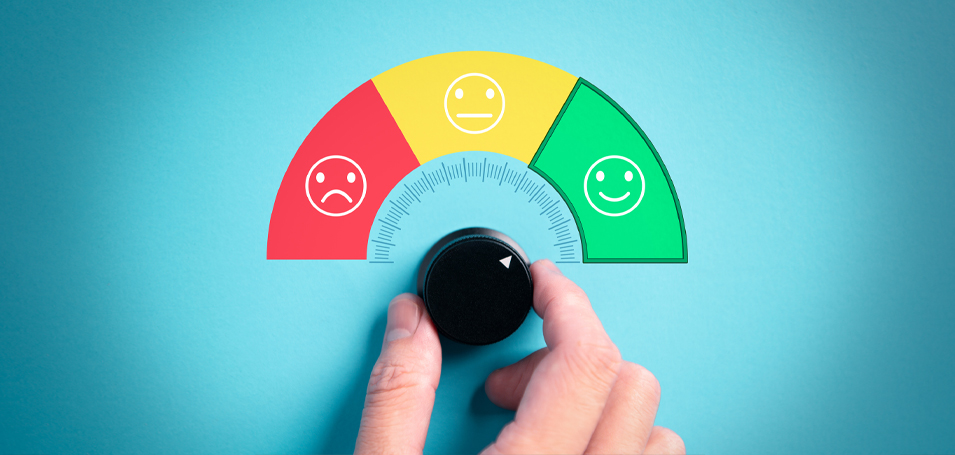Your customer education development plan is a complete brief which you can use to gain clarity about your project, as well as get cross-functional alignment from all of the different stakeholders who will be developing customer education with you.
In The Customer Education Playbook: How Leading Companies Engage, Convert and Retain Customers, we discuss how to create a thorough customer education development plan. This excerpt includes an interview with customer education leader Debbie Smith, who shares her steps for creating a development plan. For the full chapter (and much more), you can get your own copy of the book right here.
Using the RASCI Model to Identify Stakeholders
The RASCI model is a variant of the RACI model, a project management tool that originally came from software development. A RASCI matrix can help identify the stakeholders on any given project, then assign roles and responsibilities.
Start by writing down everyone who will be involved in your customer education program, then clarify their roles and responsibilities. Start by breaking the program into small tasks, from planning and analysis, to design and customization, and iteration or support. Give each stakeholder a label from the 5 “RASCI” options:
- Responsible: It’s this person’s duty to get the job done. Think of them like a project owner.
- Accountable: This person establishes the project scope, timeline, and resources, and reviews the work involved. There should be just one Accountable for each project.
- Supportive: Include here anyone that is being called upon to help with a specific element of the project.
- Consulted: Here you’ll identify subject matter experts who need to be consulted with to get the job done.
- Informed: This identifies someone who should be kept in the loop, but may not formally contribute.
By creating a RASCI matrix, you can ask important questions ahead of time, such as:
Do I have too many people that are Accountable for this task, which could lead to conflict in signing off?
Do I have enough people who are Responsible, or is the project likely to stall?
Are the people listed under Consulted flexible enough to become Supportive where necessary?
Balancing Scope, Timeline, and Resources
Next, imagine a triangle where the three corners are marked Scope, Timeline, and Resources. This is the project management triangle, and each corner impacts the others. For example, if you adjust your timeline, it’ll impact the scope of what’s achievable and the amount of resources needed. If your budget gets cut, this might increase the time it takes to complete a project, or change the scope of what you can deliver.
It’s important to make sure that these three corners are balanced effectively from the beginning, and whenever a change occurs. In my experience, it’s not uncommon to hear something like, “How can we get this done a week earlier?” My response is usually, “We can either reduce the scope, or we’ll need more resources to work on it.”
1. Defining Scope
Ask yourself, how high-production does this project need to be? Is the “wow” factor necessary, or can you achieve the same results with less production and pizazz? This might allow the project to get done in less time and with fewer resources.
Consider interactivity, as the more interactive your content, the longer it will take to produce, and the higher the cost. At one end of the spectrum is simple text- or graphics-based content where the learner reads before moving on. At the other end, highly interactive content includes complex branching scenarios and non-linear navigation that the user can independently explore. Both have their place – it’s about considering what is right for the learning need.
I’m a real advocate for making sure the scope of your project is focused, tight, and not over-produced. Scope has an impact on timeline and resources, so reducing production value equals getting farther with time, people, and budget.
Great advice is to always lean toward getting something out rather than let perfection become the enemy of progress. As creators, we can feel tempted to keep iterating, improving, and making things as good as possible. However, no one will argue with you that the quicker you can get something to market, the better. Work out what the necessary level of quality is for it to be ready for its audience, ensure you’re creating for a single learning need, and stick to that.
2. Setting a Timeline
You may find that the timeline for your customer education program is led by the broader Go-to-Market (GTM) strategy. It’s important to have a plan that meets the pace of evolution of the product and its release cycles.
Rather than picking a completion date for your customer education program, break down your project into smaller parts and milestones. Then keep a cadence to check in, iterate, and adjust as necessary.
But, before you can create milestones, visualize what your project will look like upon completion. With that picture in mind, you should be able to work backwards to define the stages to reach your goal.
Identifying milestones is a great way to stay on track, and also break up your work into smaller, digestible actions. At each milestone, you can gather feedback, identify who’s in the consultative or supporting category, and ensure you’re getting the right input.
3. Understanding Resources
The last point on the project management triangle is Resources, which is often the one with the least wiggle room. A lot of professionals building a customer education development plan are a team of one or two. These small teams deal with a lot of requests, but don’t always have control over their resources. If you can augment your resources with contractors and freelancers, great! Otherwise, you probably need to start with what’s available, then work backwards to build out the scope and the timeline.
When assigning resources to your project, think back to what we said earlier, and lean toward a bias for action. As learning professionals, of course we want to ensure that our experiences are effective and engaging. But it’s important to remember that we’re doing this in the service of customers who need this content for the value that it provides and don’t care about the package it comes in.
In general, I’ve seen customer education professionals tend to default to a higher level of quality than they need to. If you are cognizant of this, you may be able to do more with less.
Bringing your Customer Education Development Plan Together
Managing the three points of your triangle can be a bit of a puzzle. Often, you’ll find at least one of the points is fixed, such as the timeline to meet a product release, or the resources in a one-person team. In these cases, that will heavily impact the scope of your project. Having a fixed budget in mind can make the puzzle a little easier to manage. For example, it may allow you to fold in contractors for added resources where necessary.
Estimating costs can be tricky at first, but you get better at it the more content you create. Start by thinking about how long it’s going to take to create an hour of viewing content. This will depend on the elements we discussed when you were establishing scope, the interactivity of the content, and the level of production.
As a general rule, for the simplest form of content, it’s an hour for each published minute, a 60:1 ratio. Scale your content up to the highest production and interactivity level, and it could be ten times that amount.
Later in the Customer Education Playbook, Barry Kelly and I discuss how to create the content and the experience of your learning, plus how to effectively distribute it with a plan for content consumption.
You can learn more, and get hold of your own copy right here.




